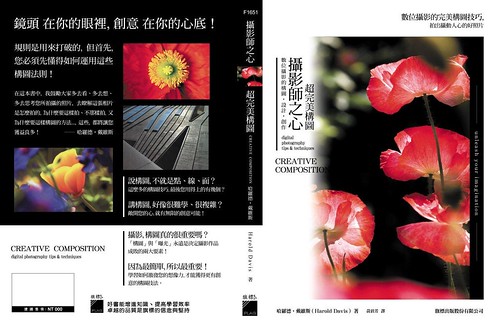This is the cover of the Traditional Chinese (Taiwan) translation of Creative Composition. I gather that Traditional (sometimes also called Orthodox) Chinese uses visually richer characters than the abbreviated written version of Chinese used on the mainland. Since I am no Chinese scholar, if this impression is wrong please let me know.
I find the choice of cover image (which differs from the original English edition) interesting. This selective focus image of poppies (shown on the right side above) always struck me as Chinese in feeling, which is why I named it Pagoda of Poppies. Apparently, someone in China agrees with my impression.

rky101
24 Jan 2011On Chinese language:
The Chinese language originated thousands of years ago from drawing symbols or simple icons on oracles and bamboos. Later it developed into “squared shaped characters”. Until the end of last century, it developed a simplified version, on mainland, based on traditionally and widely popular handwriting caligraphy, which usually went much simpler than when the same character was written in “printing format”. The purpose was to make the writing much easier, and thus learnt by people quickly. Meanwhile, it will “facilitate” communication (because during the 1950s, the text messages were mostly hand written). Taiwan, on the opposit, was not taking this step or sharing the development, probably due to the political ideas at that time, and thus still uses this “less” developed, old version of Chinese, although Harold you call it Orthodox Chinese This is quite different from many other aspects of Taiwan where it mostly has taken steps of modernization farther foreward againt its counterpart in mainland China.
This is quite different from many other aspects of Taiwan where it mostly has taken steps of modernization farther foreward againt its counterpart in mainland China.
2. This Chinese version
From the text messages listed on the covers in this picture, it gives totally different feeling/impression of this book to a reader if he/she has not heard Harold Davis and his photography. In my personal experience, my first impression of your photography when I encountered on the Internet about over a year ago was a new style and technique-based artistic photography. In short, new and pretty.
In this Chinese version, it emphasizes “composition, composition, composition”, sounds another routine book on photography composition.
Just my personal feeling but none else